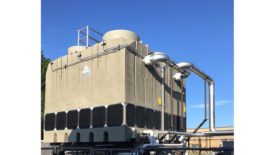- MEDIA GROUP
- NEWS
- MAGAZINE
- MEDIA
- REFRIGERATION
- BUSINESS 101
- RESIDENTIAL
- COMMERCIAL
- DIRECTORY
- MORE
- INFOCENTER
Chillers and Towers
Don’t Let the Massive Emergence of Cicadas Bug Your Cooling Tower Performance
Goodway Technologies offers best practices for keeping cooling towers clean
May 8, 2024
Changes in Chiller Use
Versatile chillers offer efficiencies, but their uses bring new challenges as well
Read More
HDPE Cooling Tower Makes the Grade
Delta Cooling Towers’ TM Series 310-ton HDPE cooling tower features a modular, seamless, engineered-plastic leak-proof design
Read More
How Low-Temperature Absorption Chillers Can Optimize Food and Beverage Processing
Have you ever considered the carbon footprint of a cookie or maybe your mid-afternoon latte?
Read More
Space-Saving Chillers
Manufacturers strive to make chillers smaller while also increasing their efficiency
Read More
Project Files: Episode 63 — University of Cincinnati Chiller Upgrade
Smardt chiller install achieves 32% reduction of kWhr in energy needs
Read More
Chillers Go Green With Low-GWP Refrigerants
Manufacturers are offering new solutions that comply with EPA regulations
Read More
HVAC Solutions Help Data Centers Achieve Sustainability
The right equipment can reduce energy consumption, as well as the carbon footprint
Read More
Copyright ©2025. All Rights Reserved BNP Media.
Design, CMS, Hosting & Web Development :: ePublishing












